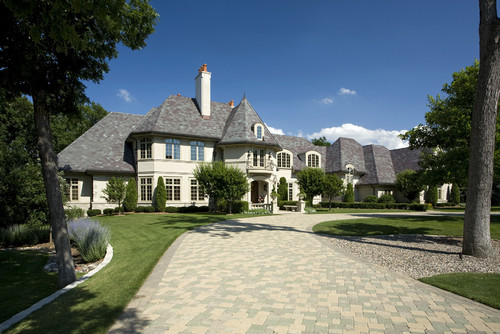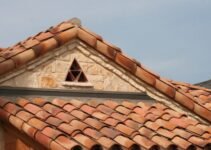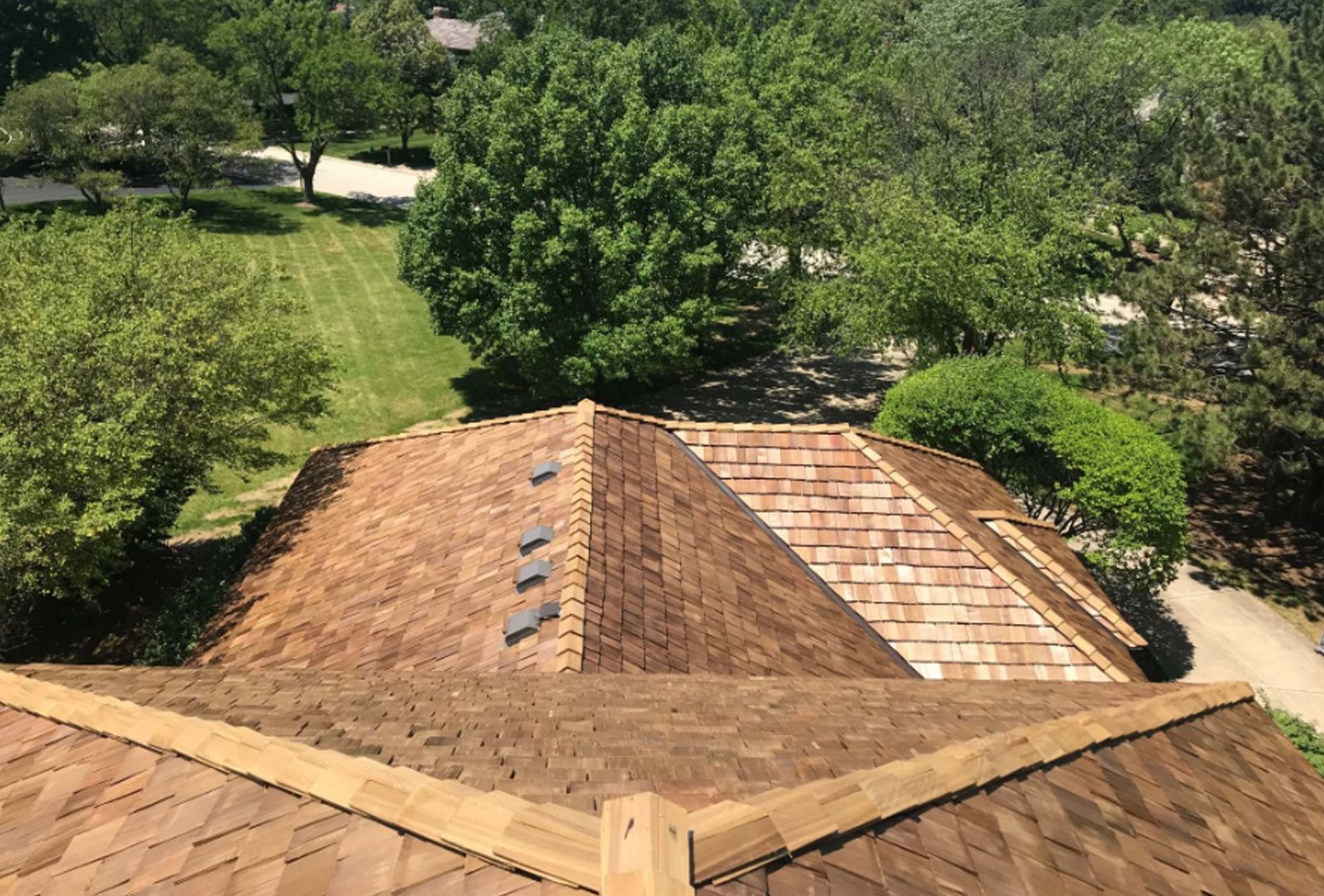A well designed roof can provide protection, beauty, charm and personality to your home. Instead, a roof that is not manufactured and installed properly will cause major damage to your house going up to its complete degradation.
Therefore, choosing the right material for your roof is a critical decision and often depends on your personal taste as much as on your living area. More than that, local codes and styles dictate the type of roofing materials.

Photo by John Kraemer & Sons – Look for exterior home pictures
However, you can choose from many types of materials such as asphalt composition shingles, wood shakes, metal roofing, ceramic roofing (Spanish-Style), composition slate or slate roofing.
Slate is the most common stone used as roofing material. It is a natural and attractive material and slate roof will ensure an effective protection to any type of construction.
Slate Roofs in History
Stone in various forms has been used since ancient times as roofing material. But initially, the stone was not used for roofing because it was considered to be too heavy for columns supporting the building. However stone eventually found its rightful place in the ancient builder preferences.
Some interesting examples are found in:
– Trulli – were and are still made of limestone. They are still found in Puglia (southern Italy)
– Roman Domes – were made of cement (which is actually a stone material designed by man)
Slate Roof Advantages
Stone roofs that used slate have become popular in areas where slate was easy to find locally. However, slate roof was and is still, widely used to protect luxury roofs.
Although it is a quite expensive choice, its durability, natural appearance and the variety of types and models make slate an unmatched option for a roof.
Natural beauty and a long lifespan are two of the important features of the slate roof. Installed properly, slate roof provide fire protection and in addition its maintenance costs are minimal. But let’s see in detail the advantages of such kind of roof.
– Long lifespan;
– Naturally impervious surface;
– Low maintenance;
– Tiles are quite heavy – so it’s a roof suitable for areas with strong winds;
– Aesthetically pleasing roof;
– If handled carefully, slate can be unlimited reused;
– Provide good fire protection;
– These roofs are part of the national patrimony in many areas such as the rural areas in the United Kingdom;
– Slate does not rot and is not affected by insects.
Slate Roof Disadvantages
Some of the major disadvantages of slate roofs are:
– Slate roofs are roofs quite expensive – both in terms of material costs, and the workmanship. Slate is fixed with nails, an effective technique but very demanding that can be performed only by professional workers trained to avoid breaking plates. Nails should not be too tight to allow the material to shrink or expand depending on the temperature.
– Because slate is heavy, sometimes it needs additional support.
– It is difficult to walk on such a roof when repairing. Slate roof can easily break under the weight of a man.
Slate Roof as an Option
Slate and metal roof is a very viable option. Aesthetic attractiveness of the stone is somewhat adapted to the versatility of a metal roof.
Composition slate is gaining popularity for its appearance, durability and fire resistance. The roof is usually made with cement and a variable component, such as wood fiber, fiberglass or perlite.
Roofing Contractors & The New State Laws | How To Build A House (howtobuildahouseblog.com)


